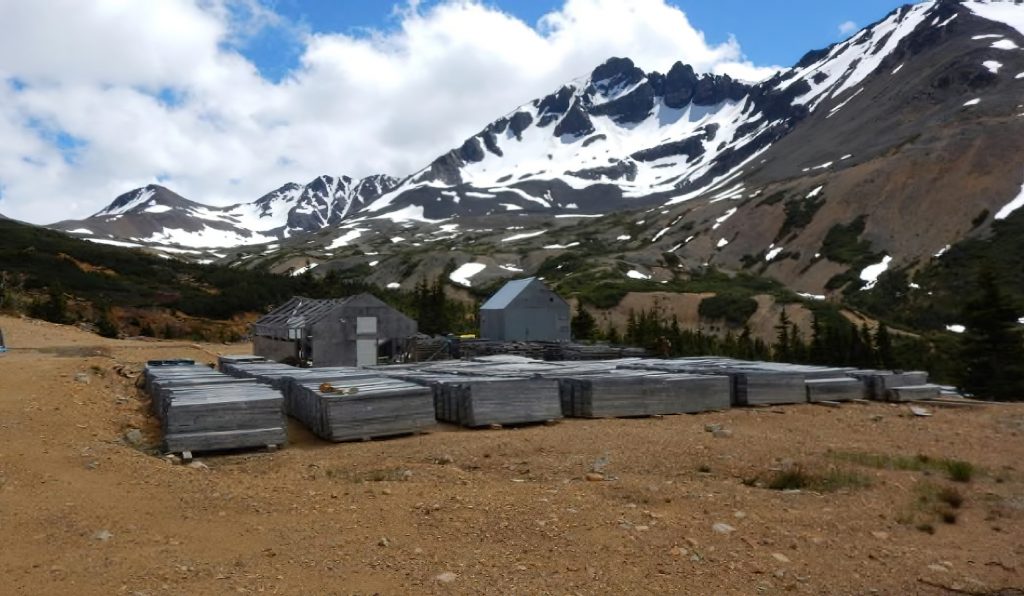Surge Copper drills 0.36% CuEq over 756 metres at Berg, British Columbia

Surge Copper Corp. [TSXV-SURG; OTCQX-SRGXF; FSE-G6D2] reported assay results from drill hole BRG23-243, the first hole of the company’s 2023 drilling program testing the deeper portions of the large Berg copper-molybdenum deposit in west-central British Columbia.
Highlights: Hole BRG23-243 encountered the second longest mineralized interval from the Berg deposit to date, intersecting 756 metres grading 0.36% copper equivalent (0.26% copper, 0.026% molybdenum, 3.6 g/t silver, and 0.02 g/t gold) from 22 metres depth, with the hole ending in mineralization
The upper portion of the hole encountered the chalcocite blanket returning a subinterval with elevated copper of 172 metres grading 0.35% copper, 0.008% molybdenum, 2.8 g/t silver, and 0.03 g/t gold from 34 metres depth.
Hole BRG23-243 was collared in the southeasternmost part of the Berg deposit and demonstrates that the deposit remains open in this direction.
Hole BRG23-243 accomplished multiple objectives including learning more about the deep characteristics of the deposit within an area of low drill density, providing material for metallurgical testwork, potentially converting Inferred resources to the Measured and Indicated categories, and extending grade and continuity of mineralization near surface and to depth within the current resource model.
Prior to the 2023 program the Berg deposit only had 3 holes with lengths exceeding 600 metres; all 3 holes from the 2023 drill program were longer than 600 metres, and each hole will increase the understanding of Berg mineralization at depth.
Leif Nilsson, CEO, commented: “We consider hole BRG23-243 to be a tremendous drill result for the Berg project . Th is was a 100-metre step-out exploration hole that was designed to meet multiple scientific and economic objectives, including extending above average grades in areas of the current block model with limited drill density, collecting potential sample material for various geochemical and metallurgical tests, and testing the characteristics of an important geological contact within the under – sampled deeper regions of the deposit. The results from the upper portions of the hole demonstrate that the deposit remains open for further expansion to the southeast (a region of the deposit that was modeled in the recent PEA as being developed in the second and third phase s of the pit), with potential implications for future mine optimization and the life of mine strip ratio. The results from the very bottom of the hole , across the contact with and into the Berg Stock, demonstrate the prospectivity of this geological target, which tends to act as a control on stronger molybdenum grades, and has seen very little testing at depth around its entire circumference.”
Hole BRG23-243 was a 100-metre step-out testing the southeast side of the Berg deposit within an area of low drill density and was drilled toward the northwest at a dip of -74 degrees to a total depth of 778 metres. The depth of the hole was targeted to intersect the contact with the Berg Stock which is one of the primary geological controls on mineralization within the deposit. The hole encountered variably developed secondary chalcocite blanket from 22 to about 206 metres depth, then encountered a large interval of veined and mineralized volcanic wall rock to 758 metres depth and ended within mineralized Berg Stock. Copper grades are higher within the near-surface secondary chalcocite blanket, whereas molybdenum grades increase with depth and are highest adjacent to and within the Berg Stock. The hole has successfully demonstrated continuity of mineralization from near surface through its entire length and will extend higher grades through the central and deeper parts of the system.
The 2023 Berg drill program operated from late July to early September 2023, and 3 diamond core holes (BRG23-243, 244, and 245) totalling 2077 metres of drilling were completed. The program was designed to learn more about the deep characteristics of the deposit while also providing fresh material for metallurgical testwork and converting Inferred resources to Measured and Indicated in areas of low drill density. Holes BRG23-244 and 245 also tested the Berg deposit at deeper levels in areas with limited previous deep information and are expected to contribute to the understanding of the deeper part of the system and potentially extend mineralization to depth. Assay results from these holes will be released once they are received, verified, and interpreted.
The company held its Annual General Meeting on September 21, 2023. All proposed resolutions were approved by shareholders.
The company’s flagship project is the Berg Project, in which it is earning a 70% interest from Centerra Gold Inc. [CG-TSX]. The company has announced a PEA on the Berg Project which outlines a large-scale, long-life development project with a simple design and high outputs of critical minerals located in a safe jurisdiction near world-class infrastructure. The PEA highlights base case economics including an NPV8% of C$2.1 billion and an IRR of 20% based on long-term commodity prices of US$4.00/lb copper, US$15.00/lb molybdenum, US$23.00/oz silver, and US$1,800/oz gold. The Berg deposit contains pit-constrained 43-101 compliant resources of copper, molybdenum, silver, and gold in the Measured, Indicated, and Inferred categories.
